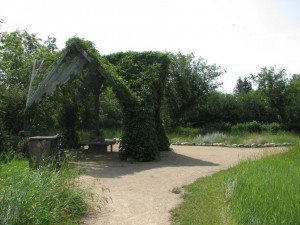What is Naturopathic Medicine?
 Naturopathic medicine is a system of healthcare based on looking at the totality of an individual, identifying imbalances to the perfect state of harmony that is the birthright of the human body and its physiology, and then implementing the means to start correcting it.
Naturopathic medicine is a system of healthcare based on looking at the totality of an individual, identifying imbalances to the perfect state of harmony that is the birthright of the human body and its physiology, and then implementing the means to start correcting it.
Many have been taught to see the body as a machine that breaks down. Machines don’t fix themselves, so we have been taught to expect the use some sort of tool to fix it. Simple symptom-control has its definite uses in the practice of medicine. When the symptom is so extreme that it threatens life, symptom-control measures are crucial.
The naturopathic medical approach sees symptoms as the body’s method of trying to communicate something to us. The body is seen as an intelligent system that wants to function properly, but we can inadvertently create impediments to it doing so. Imagine if one were to absent-mindedly place one’s hand on a hot stove element. Pain would be the resulting symptom. The conventional approach of offering a pain-killer would help to alleviate suffering, but never get to the root cause of the pain. In this example, pain is the symptom that serves a purpose. It tells you to move your hand off of the stove element. Once this is accomplished, there is no need for the suppressive medication. For chronic health problems, this approach often yields a much more satisfying effect on the body’s overall health than simple symptom suppression.
With the almost one million man-made chemicals we have added to our Earth’s physical environment (air, soil, water, food chain) in the past 60 years, our bodies haven’t had enough time to adjust perfectly to their effects. When the stresses of fear-inducing media messages, elecro-magnetic field pollution, and stressful jobs and living environments are added into the mix, there can be a myriad of factors at the heart of the imbalances that cause us to experience the lack of health and dis-ease that we can experience as illness.
Naturopathic medicine is based on 6 specific philosophies to address these stressors that throw us out of balance and help bring about healing in the body:
-
First do no harm:
Primum Non Nocere
Illness is a purposeful process of the organism. The process of healing includes the generation of symptoms which are, in fact, an expression of the life force attempting to heal itself. Therapeutic actions should be complementary to and synergistic with this healing process. The physician’s actions can support or antagonize the actions of the vis mediatrix naturae — the healing power of Nature. Therefore, methods designed to suppress symptoms without removing the underlying causes are considered harmful and to be avoided or minimized.
-
The healing power of nature:
Vis Mediatrix Naturae
The body has an inherent ability to establish, maintain, and restore health. The healing process is ordered and intelligent; nature heals through the response of the life force. The physician’s role is to facilitate this process, to identify and remove obstacles to health and recovery, and to establish or restore a healthy internal and external environment.
-
Identify and treat the cause:
Tolle Causam
Illness does not occur without cause. Underlying causes of disease must be discovered and removed or treated before a person can recover completely from illness. Symptoms express the body’s attempt to heal, but are not the cause of disease. Symptoms, therefore, should not be suppressed by treatment. Causes may occur on many levels including physical, mental, emotional, and spiritual. The physician must evaluate fundamental underlying causes on all levels, directing treatment at root causes rather than at symptomatic expression.
-
Heal the whole person:
Tolle Totum
Health and disease are conditions of the whole organism, a whole involving the complex interaction of many factors. The naturopathic physician must treat the whole person by taking these factors into account. The harmonious functioning of physical, mental, emotional, and spiritual aspects are essential to recovery from and prevention of disease. This requires a comprehensive approach to diagnosis and treatment.
-
The physician as teacher:
Docere
A cooperative doctor-patient relationship has inherent therapeutic value. The physician’s major role is to educate and encourage the patient to take responsibility for their own health. The physician is a catalyst for healthful change, empowering and motivating the patient to assume responsibility. It is the patient, not the doctor, who ultimately creates/accomplishes healing. Teaching with hope, knowledge, and understanding, the physician acts to enable patients to heal.
-
Prevention:
Prevention is the best cure
The ultimate goal of any health care system should be prevention of disease. This is accomplished through education and promotion of life-habits that create good health. The physician learns to assess risk factors and to sharpen their deductive reasoning, and understand the patient’s circumstances. Appropriate interventions are then sought to avoid further harm or risk to the patient. Building health works better and more surely than fighting disease.